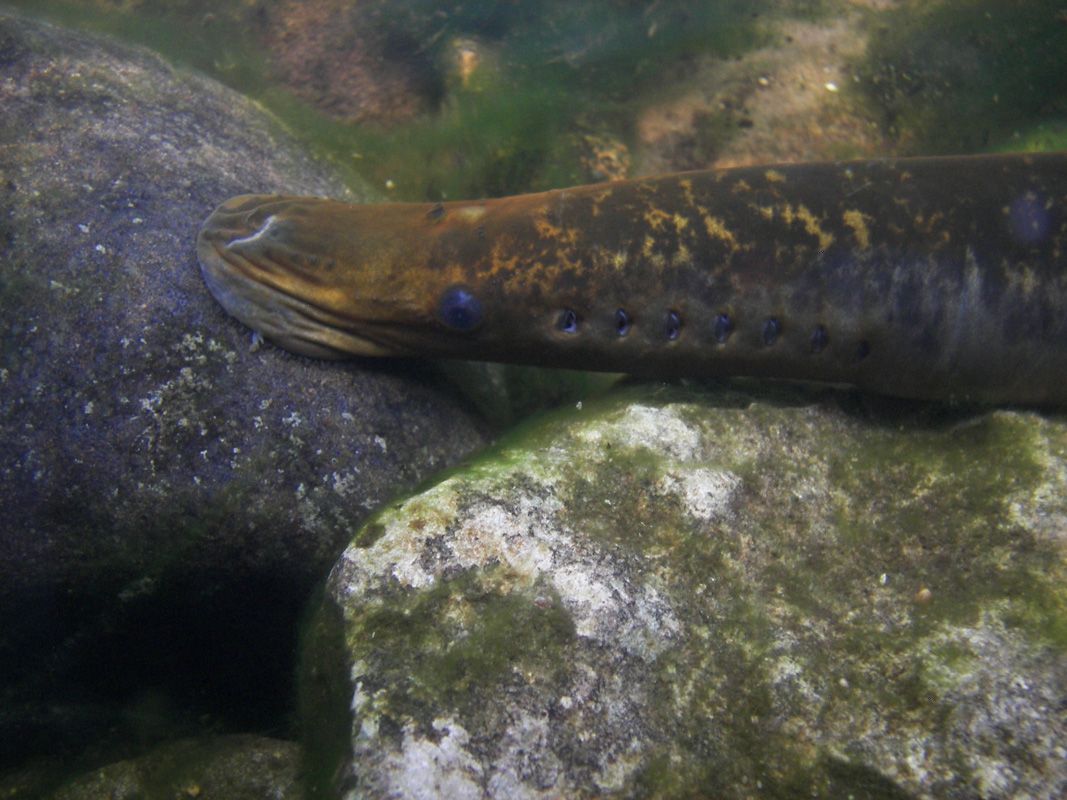Sea Lampreys Have Hot Sex

Male sea lampreys need to be pretty hot to attract females — thermally hot, that is.
Biologists from Michigan State University have discovered a ridge of fat cells near the anterior dorsal fins of sexually mature male lampreys that heats up when females approach. Until now, scientists had thought this "fat bump" was just ornamental.
In addition, this is the first such thermogenic, or heat-producing, tissue identified in a cold-blooded species, the team reported last week in The Journal of Experimental Biology. [See Video of Lampreys' Hot Sex]
"In bears, when they come out of hibernation, this type of brown fat helps them become active again," said Yu-Wen Chung-Davidson, a biologist at Michigan State University and a co-author of the paper. "This fish also has this fat cell that generates heat. It's beyond my imagination."
Producing heat is energy-intensive and burns a lot of calories, especially in cold-blooded animals. But sea lampreys die once they spawn, so it's in their best interest to use up whatever energy they have to secure a mate, Chung-Davidson told LiveScience.
The exact role the heat plays in lampreys' animal sex remains unclear. The team found that temperatures rose up to about 0.5 degrees Fahrenheit (0.3 degrees Celsius), but varied depending on the female, suggesting that males chose to invest more energy in more attractive mates. Heat does not travel well through water, so the group believes that males first use pheromones, or chemical signals, to lure females from afar and then continue to encourage spawning with heat once they make body contact.
Once the two jawless fish make body contact, the male uses his suction-cup mouth to attach to the female's head, and the pair begins thrusting vigorously — essentially pushing out their respective gametes, eggs and sperm into the water. The gametes settle in a nest, or a pebbly depression that the female digs out with her tail.
Sign up for the Live Science daily newsletter now
Get the world’s most fascinating discoveries delivered straight to your inbox.
Sea lampreys are considered parasites — they feed on the blood of other fish in both freshwater and saltwater — and have become an invasive species in the Great Lakes. The research group hopes that by better understanding how these fish mate, they will be able to develop more effective population-control strategies.
"During their lifetime, they kill 40 pounds of fish," Chung-Davidson said. "It's a big problem in the Great Lakes."
Next, the team plans to search for a heat receptor in females in order to better understand how females might perceive the signal.
Follow Laura Poppick on Twitter. Follow us @livescience, Facebook & Google+. Original article on Live Science.












